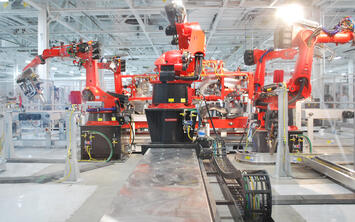
America is in the early days of a vast demographic transition. In the coming decades, the U.S. population will grow far more slowly than ever before, and it will become much older and more racially diverse. This shift will transform the country in many ways, and the United States is not prepared.
Let’s start with the U.S. economy. It will almost surely face vast labor shortages, leading to much greater reliance on AI and robots. A shrinking population of young adults might also mean less innovation and risk taking. The United States will find itself with too many schools and colleges and too little infrastructure to support its senior citizens. Absent sweeping course corrections, demographic change will drive the national debt exponentially upward, generate higher inflation, and upend America’s geopolitical position. And it will rescramble politics, as parties struggle to adapt their messages to a very different electorate.
Preparing for these realities will demand wrenching shifts in the country’s priorities. The United States must rethink its policies on innovation, infrastructure, health care, taxes, trade, immigration, and more. As countries around the world face similar trends, those that rechart their course the most successfully will prevail. Those that don’t – perhaps including the United States – will experience painful decline.
A new era
Four megatrends will reshape America’s population over the next 25 years and beyond.
First, according to projections from the U.S. census, the country’s population will grow just 6% between 2024 and 2050, from a total of about 340 million today to 360 million in 2050. It will peak in the 2070s at about 370 million and then decline for many decades thereafter. These forecasts are based on assumptions by the Census Bureau about births and immigration. Given how slowly birth-rate trends evolve, these parts of the estimates are likely to prove accurate.
Immigration, by contrast, is determined by many factors including political decisions made by Congress, so making accurate predictions about its course is harder. The U.S. census assumes that net immigration will remain at just under a million people per year going forward – similar to the levels between 2000 and 2019, but much lower than the inflows between 2022 and 2024. But the Census Bureau also offers alternative high and low immigration scenarios, which put the 2050 population at 384 million and 345 million, respectively.
Read the rest of this piece at BushCenter.org.
J.H. Cullum Clark is Director, Bush Institute-SMU Economic Growth Initiative and an Adjunct Professor of Economics at SMU. Within the Economic Growth Initiative, he leads the Bush Institute's work on domestic economic policy and economic growth. Before joining the Bush Institute and SMU, Clark worked in the investment industry for 25 years.
Photo: Robotic auto manufacturing, by Patrick Herbert via Flickr, under CC 2.0 License.












